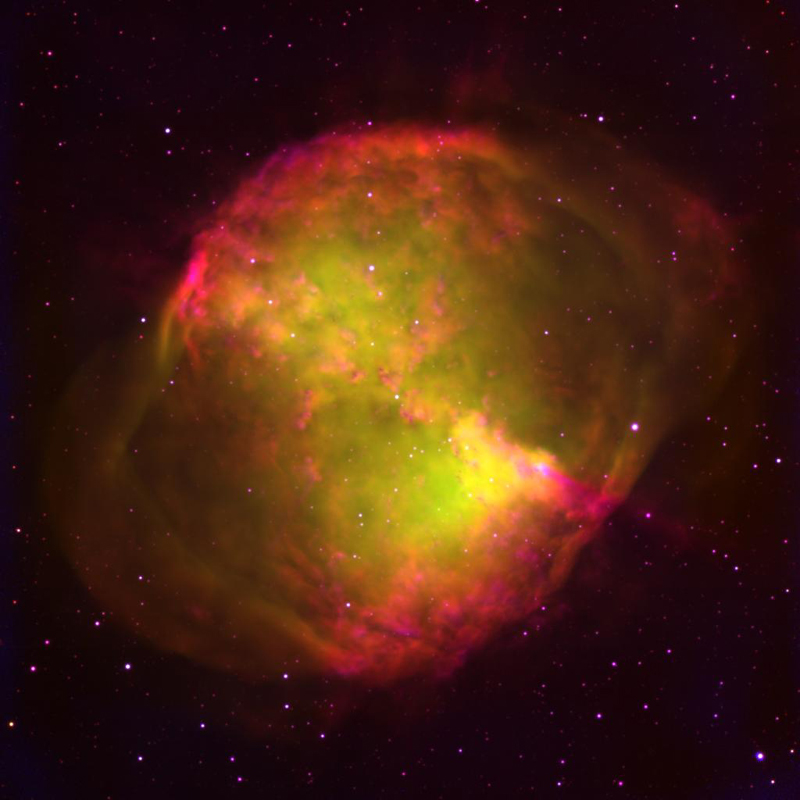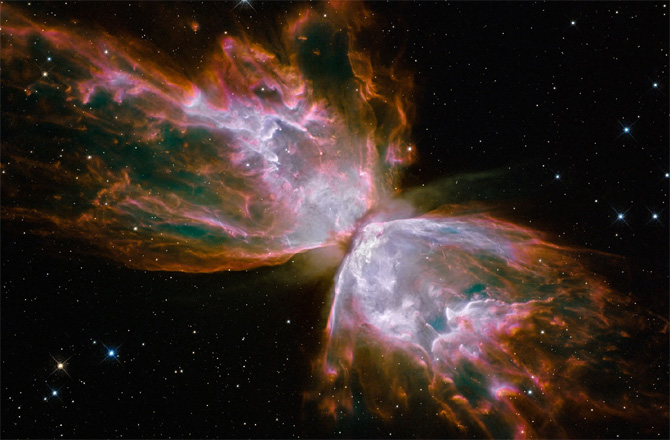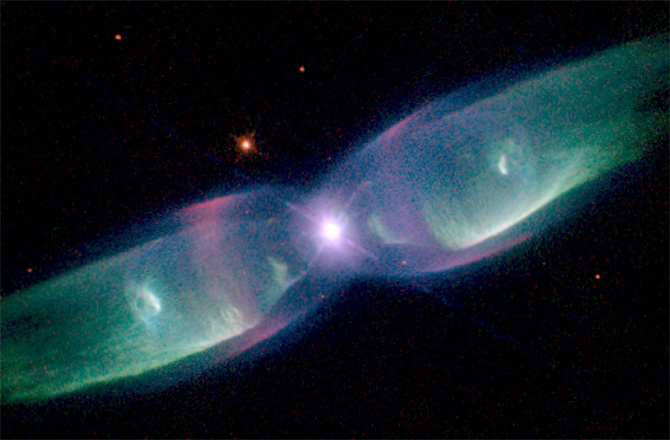Mystery of the nebulae- "butterflies"

Planetary nebulae are neither mysterious, nor even just a rare type of celestial objects. It is believed that this is the final stage of the life of stars comparable in mass to our Sun: dying, the stars eject their outer shell outside.
However, not so long ago, astronomers identified a group of planetary nebulae in our galaxy, oriented in one direction. I would like to tell about this unusual “unanimity” in this continuation of amateur notes on astronomy.
The first planetary nebula, located 1200 light-years away, was discovered in 1764 by Charles Messier. Here she is:
')

Today, scientists suggest that our galaxy can have up to 10,000 planetary nebulae. About 1,500 are still open. After 5 billion years, the Sun will swell up to the orbit of Venus, becoming a red giant, after which it will also form one of the beautiful nebulae, in the center of which a white dwarf will glow brightly.


Scientists examined about 130 planetary nebulae in the vicinity of the central zone of the Milky Way. Among the bipolar nebulae, a rather large number of oriented in one direction was found.

These "unidirectional" nebulae are located at fairly large distances from each other. They are all different ages. One of the first explanations for their general orientation may be the same orientation of the stars before the shell is released. However, the location in the "densely populated" center of the galaxy and belonging to different generations suggest that the reason should be sought among some external forces.

The strangeness of the situation is reinforced by the fact that if we accept as the working hypothesis the same orientation of the stars prior to the release of the shells, it turns out that the rotation axes of all these stars were perpendicular to the clouds of interstellar gas from which they were formed. And this is considered very atypical. Moreover, unidirectional nebulae are found only in the central part of the galaxy. In remote areas to which the solar system belongs, such a trend has not yet been detected.

According to one hypothesis, the orientation of bipolar nebulae in the center of the Milky Way may be due to the presence of a powerful magnetic field generated by the core of our galaxy. In this case, this field should have a noticeable effect on many other processes in the central part, and not just on the trajectory of the gas leaving some stars.
Nevertheless, all this is only a hypothesis, and we do not know anything about the characteristics of magnetic fields in the distant past. Perhaps further study of these nebulae will shed light on the past not only of individual stars, but also of our galaxy as a whole.
Source: https://habr.com/ru/post/196498/
All Articles